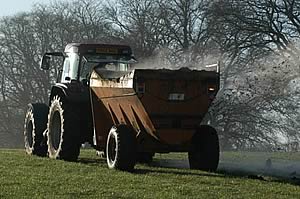 |
|||||||||
|
|||||||||||||||||||
|
|
Free Muck Analysis at Grassland and Muck 2011 A muck analysis technique will help farmers analyse the nutrient content of manures rapidly and accurately – and at a lower cost than before.
A LINK-funded research project has developed the innovative approach using Near Infrared Reflectance Spectroscopy (NIRS) to predict total and ammonium nitrogen, phosphate, potash, magnesium and sulphur content of manures, slurries and biosolids. NIRS is already widely used for the analysis of silages and cereal grains. Farmers are invited to bring along a manure or slurry sample with them to Grassland and Muck 2011 in May. The first 25 farmers each day to bring along a maximum of two samples will qualify for free analysis. Results will be sent to farmers after the event. Plus, visitors will be able to see a demonstration of the technology throughout the event on the AHDB stand in the muck area. The demonstration will be run by a joint team from HGCA, DairyCo, EBLEX, BPEX, Potato Council and research contractors Eurofins and ADAS, who can provide more information on the service. Nigel Penlington, BPEX Environment Manager, said: “This analysis technique enables farmers to manage nutrients with greater confidence. It will help reduce the environmental impact of manure use and increase profitability.” This project has also developed a predictive capability for NIRS to estimate the rate and extent of nitrogen (N) release when manures are applied in the field. Benefits of the NIRS service include:
|
||||||||||||||||||

|
|
||||||||||||||||||
| home | agri-services | pedigree
pen | news | dairy | beef | machinery BPS | property | organisations | site map |
|||||||||||||||||||


